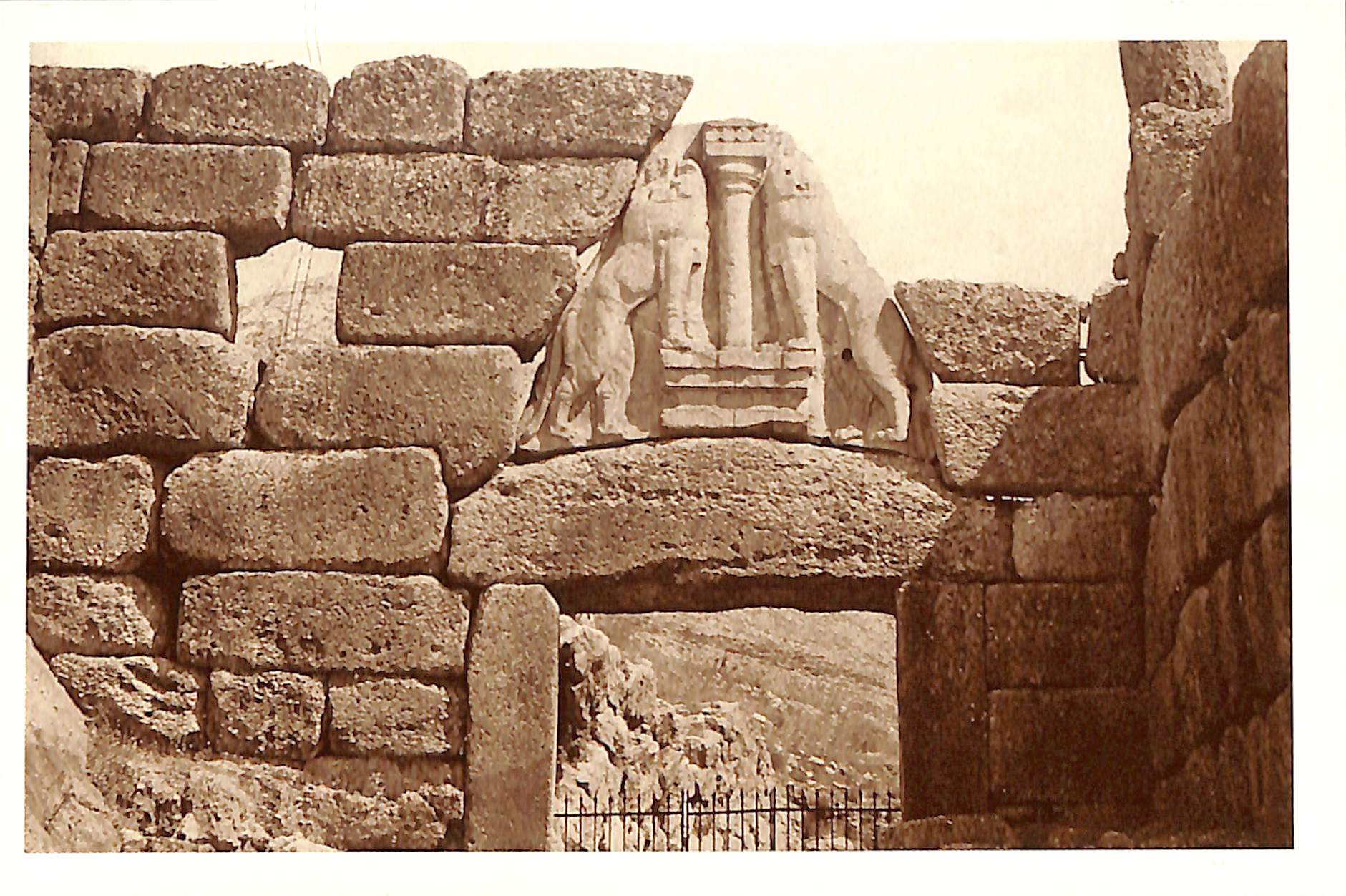
4/28/2025 4:42:42 PM
The Lion Gate at the Acropolis of Mycenae
The Lion Gate serves as the main entrance to the fortified Acropolis of the archaeological site of Mycenae. It owes its name to the relief sculpture of lions that covers the “relieving triangle” formed above the lintel of the entrance. The Lion Gate features a symmetrical depiction of two facing lions standing upright, with their front paws resting on a small altar, above which rises a column. This composition is considered the oldest monumental relief in Europe. Unfortunately, the animals' heads have not survived. Although it has always been the most prominent of the Mycenaean structures, in 1841 the archaeologist Kyriakos Pittakis (1798–1863) carried out cleaning works on the gate, and in 1875 Heinrich Schliemann conducted excavations at the site. The threshold, lintel, and jambs of the Lion Gate are monolithic and made of amygdaloid stone. The gate measures 3.10 meters in width and 2.95 meters in height, narrowing slightly at its highest point to 2.78 meters. Its construction dates to around 1250 BC and coincides with the second phase of fortification of the Acropolis. In the past, the gate was closed with a double-leaf wooden door secured with a locking bar.
Pictured: The Lion Gate at the Acropolis of Mycenae in 1890. ©Municipal Photography Museum of Kalamaria ‘Christos Kalemkeris’.

